Concentrates 101: A Beginner's Guide To Cannabis Concentrate
Published :
Feb 18, 2016
Categories :
Cannabis recipes

There are a lot of cannabis concentrates out there, and for the novice it can be pretty daunting. We have put together a guide to all things concentrate to help explain what they all are.
Excerpt: The world of cannabis is a complex one, whether it be the varying consumption methods or the various chemicals needed at the growing stage. The world of cannabis concentrates is no different and can be a daunting form of the substance to break into. This simple guide will give you all you need to know about this versatile form of cannabis and the different types of concentrate widely available to you. Whilst we won't be examining the specific chemical formula for the breakdown of cannabinoids, we will give you an idea of the uses for each concentrate and the theory behind its production.
Now, when we say concentrate, we aren't talking Heisenberg levels of THC in your typical dried bud. To put it simply, a cannabis concentrate is the result of separating the cannabinoids from plant matter, often through artificial means, increasing their density.
There is one cannabis concentrate that has been around for thousands of years: hashish, a cornerstone of cannabis that we will all be familiar with. Nowadays the process has become far more advanced and often involves using solvent based extraction methods, stripping the essential oils from the plant matter, binding them to the varying solvents used. Ultimately the concentrates can be split into two camps; mechanical and solvent based.
The pure and simple difference between the two is that mechanical concentrates require a physical process without the use of any added solvents to extract the cannabinoids, whereas solvent based concentrates do use solvents, and are then purified or filtered for use.
MECHANICAL CONCENTRATES
Kief
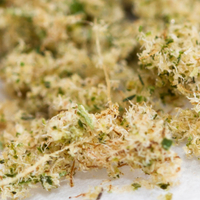 One of the simplest forms of a concentrate, it is essentially just sieving the dry cannabis through a fine screen - the finer the screen, the higher the quality of the powder. Sounds straightforward enough right? THC levels in Kief can vary wildly, giving it a reputation as a lower grade concentrate.
One of the simplest forms of a concentrate, it is essentially just sieving the dry cannabis through a fine screen - the finer the screen, the higher the quality of the powder. Sounds straightforward enough right? THC levels in Kief can vary wildly, giving it a reputation as a lower grade concentrate.
Unless you make it yourself it can be harder to find, especially when compared with some of the newer solvent extracts. However, produced by the right hands it can be extremely flavourful in its finished form.
Hashish
 Let's rewind thousands of years and look back at some mechanical types of concentrates. Remember that corner stone of cannabis? Well the first hash was created by simply rubbing your fingers or hands together after handling or pruning wet cannabis plants, rolling the trichomes into a ball. This sticky resin is often dark and discoloured due to the dirt and plant matter that comes off of the cannabis. This is known as finger/scissor hash.
Let's rewind thousands of years and look back at some mechanical types of concentrates. Remember that corner stone of cannabis? Well the first hash was created by simply rubbing your fingers or hands together after handling or pruning wet cannabis plants, rolling the trichomes into a ball. This sticky resin is often dark and discoloured due to the dirt and plant matter that comes off of the cannabis. This is known as finger/scissor hash.
As time went on, the process became more refined. The principle is the same: taking kief and compressing it into blocks or bricks of hash. However, unlike finger hash, this is done hygienically and with precision, resulting in a purer, higher-quality concentrate. Heat is also often used, resulting in a substance that has a different texture, flavour and feel to the kief it was made from.
Rosin
 The new kid on the block and one bound to put you top of the class in cannabis 101, Rosin is unique in that it needs nothing more than a hair straightener, parchment paper, and some good old-fashioned elbow grease. Using some of your prized Northern Lights XL, or any bud for that matter, place the material between parchment paper and apply frequent heat and pressure with the hair straightener.
The new kid on the block and one bound to put you top of the class in cannabis 101, Rosin is unique in that it needs nothing more than a hair straightener, parchment paper, and some good old-fashioned elbow grease. Using some of your prized Northern Lights XL, or any bud for that matter, place the material between parchment paper and apply frequent heat and pressure with the hair straightener.
This will press out the essential oils and cannabinoids in the cannabis. It results in a golden shatter or oil-like extract that is similar in appearance to high-grade BHO. Still in its infancy, early reports indicated it could be as potent in THC as its doppelgänger with significantly less difficulty.
SOLVENT BASED CONCENTRATES
Water Hash
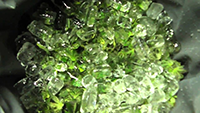 Available under many guises; bubble hash, ice wax or full melt, it is the end product of using ice water extraction. An extremely clean and safe form of concentrate, it can produce some of the best potency seen in solvent based concentrates - with the right bud, care and technique.
Available under many guises; bubble hash, ice wax or full melt, it is the end product of using ice water extraction. An extremely clean and safe form of concentrate, it can produce some of the best potency seen in solvent based concentrates - with the right bud, care and technique.
It uses a process similar to the production of Kief but incorporates either dry or fresh-frozen cannabis plants mixed with cold water and ice. The trichomes are instead broken off, brittle from the colder temperatures and put through a series of screens to remove any plant matter or impurities.
Butane Hash Oil
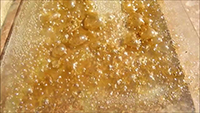 With one of the strongest potency, butane hash oil is a popular choice when looking into cannabis concentrates. Compacting the cannabis in an extraction tube, butane is then forced through it, binding to the cannabinoids. Whilst relatively simple in theory, making BHO can prove quite dangerous given its flammable nature.
With one of the strongest potency, butane hash oil is a popular choice when looking into cannabis concentrates. Compacting the cannabis in an extraction tube, butane is then forced through it, binding to the cannabinoids. Whilst relatively simple in theory, making BHO can prove quite dangerous given its flammable nature.
Finally, all that remains is to remove the butane to make it safe for consumption - typically in a vacuum where heat is applied. The result of this process can range from a thick wax to a brittle glass-like substance, widely known as shatter. It all depends on the quality of the bud, and the skill/intention of the person creating it. Because of its strong THC potency, one of the main uses for butane hash is in medical scenarios to help with chronic pain and other relentless aliments.
CO2 Oil
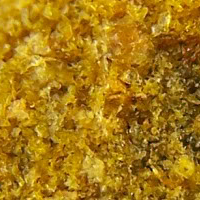 CO2 extraction is an appealing method for extracting cannabinoids as it uses no chemical solvents which could taint the concentrate if not removed correctly. The downside being that to produce on a large scale would require vast sums of money, specialist lab equipment and some specialist knowledge.
CO2 extraction is an appealing method for extracting cannabinoids as it uses no chemical solvents which could taint the concentrate if not removed correctly. The downside being that to produce on a large scale would require vast sums of money, specialist lab equipment and some specialist knowledge.
Carbon dioxide is compressed at high pressures until it becomes what is known as a “supercritical fluid”. At this stage, it is able to strip the essential oils from the plant matter, leaving you with an orange-tinted oil and a THC content varying between 50-90 percent.
Canna butter
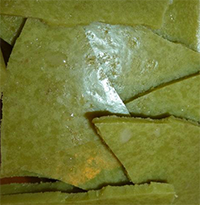 Gordon Ramsay eat your heart out, no F''ing and blinding when it comes to using this concentrate. One of the safest extracts available, the process behind it is straightforward. The fats in the butter bind to the cannabinoids, simple. Ideal for use in cooked foods as well as having the added benefit of being able to be frozen and stored without losing any potency.
Gordon Ramsay eat your heart out, no F''ing and blinding when it comes to using this concentrate. One of the safest extracts available, the process behind it is straightforward. The fats in the butter bind to the cannabinoids, simple. Ideal for use in cooked foods as well as having the added benefit of being able to be frozen and stored without losing any potency.
When you then consider that orally ingested cannabis can be up to 4 times more potent because of the way that the body processes the THC, it becomes an incredibly appealing and versatile cannabis concentrate.
Live Resin
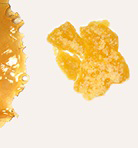 Consider yourself a concentrate connoisseur? Well, this latest trend in cannabis concentrates is proving extremely popular. Still ultimately a form of butane hash oil, it is how it is extracted that gives it its live resin title. The difference between the ever popular BHO and live resin is in the flavour and aromas it gives off. BHO is made using dried or cured cannabis plants, whereas our new trendy counterpart is made with fresh, flash-frozen cannabis. The key word here is “terpenes” or more specifically “monoterpenes”.
Consider yourself a concentrate connoisseur? Well, this latest trend in cannabis concentrates is proving extremely popular. Still ultimately a form of butane hash oil, it is how it is extracted that gives it its live resin title. The difference between the ever popular BHO and live resin is in the flavour and aromas it gives off. BHO is made using dried or cured cannabis plants, whereas our new trendy counterpart is made with fresh, flash-frozen cannabis. The key word here is “terpenes” or more specifically “monoterpenes”.
Using fresh-frozen cannabis plants allows more of the organic compounds, or monoterpenes, to be retained, which is what gives us the flavour and aroma that cannabis users have come to know and love. With these traits, it has become a new and popular concentrate product despite its usually high price per gram versus your more mainstream concentrate forms.






































